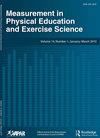不同垂直跳高测定方法的差异及其对野外测试的启示:述评
IF 1.9
4区 教育学
Q2 EDUCATION & EDUCATIONAL RESEARCH
Measurement in Physical Education and Exercise Science
Pub Date : 2022-12-28
DOI:10.1080/1091367X.2022.2163398
引用次数: 0
摘要
垂直起跳高度是运动科学和体育教学中广泛使用的一个变量。本文综述了用于计算垂直跳跃高度的各种数值方法。在力板技术中,起跳高度通常使用飞行时间(FT)或起飞速度(TOV)来计算,它们只提供在空中飞行的距离,而忽略了起跳前的质心(CoM)高度。然而,CoM在起飞前就已经升高了,这主要是由于足底踝关节的屈曲。二重积分法可以避免这个问题。在现场测试中,可以在飞行高度中加入“脚跟升力常数”,根据生物力学定义(站立位置与起跳顶点之间的身体CoM垂直差值)更准确地确定起跳高度。在比较以往研究的数据时应高度谨慎。本文章由计算机程序翻译,如有差异,请以英文原文为准。
Discrepancy Among Different Methods for Vertical Jump Height Determination and Its Implications for Field-Based Testing: A Narrative Review
ABSTRACT Vertical jump height is a widely used variable in sport science and physical education. This narrative review summarizes various numerical methods used to calculate vertical jump height. In force plate technology, the jump height is most commonly calculated using the flight time (FT) or the takeoff velocity (TOV), which provide only the distance traveled in the air and neglect the center of mass (CoM) elevation before the jump. However, CoM is already elevated before the takeoff, mainly due to plantar flexion of the ankles. Double integration methods can be used to circumvent this issue. In field-based testing, the “heel lift constant” can be added to flight height to more accurately determine the jump height according to the biomechanical definition (the vertical difference in body’s CoM between standing position and the apex of the jump). A high degree of caution should be used when comparing the data from previous studies.
求助全文
通过发布文献求助,成功后即可免费获取论文全文。
去求助
来源期刊

Measurement in Physical Education and Exercise Science
Medicine-Orthopedics and Sports Medicine
CiteScore
4.20
自引率
33.30%
发文量
24
期刊介绍:
The scope of Measurement in Physical Education and Exercise Science (MPEES) covers original measurement research, special issues, and tutorials within six substantive disciplines of physical education and exercise science. Six of the seven sections of MPEES define the substantive disciplines within the purview of the original research to be published in the journal: Exercise Science, Physical Activity, Physical Education Pedagogy, Psychology, Research Methodology and Statistics, and Sport Management and Administration. The seventh section of MPEES, Tutorial and Teacher’s Toolbox, serves to provide an outlet for review and/or didactic manuscripts to be published in the journal. Special issues provide an avenue for a coherent set of manuscripts (e.g., four to five) to collectively focus in-depth on an important and timely measurement-related issue within the scope of MPEES. The primary aim of MPEES is to publish high-impact manuscripts, most of which will focus on original research, that fit within the scope of the journal.
 求助内容:
求助内容: 应助结果提醒方式:
应助结果提醒方式:


